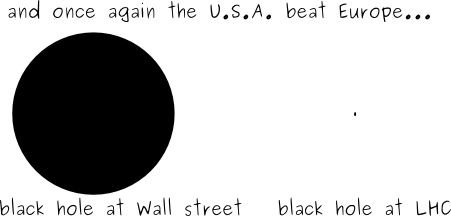hole

but the one at Wall street is said to cost estimated 900 to 1400 billion dollars at least so far while the LHC is only 4.6 to 9.2 billion dollars. I’d rather see scientists play with the money here…
randformblog on math, physics, art, and design |

but the one at Wall street is said to cost estimated 900 to 1400 billion dollars at least so far while the LHC is only 4.6 to 9.2 billion dollars. I’d rather see scientists play with the money here…
October 7th, 2020 at 11:26 am
But what about the black holes of the big bang – the primordial black holes (PBHs)? (image from this article)
According to new research by Montpellier’s Karsten Jedamzik the formerly ruled out hypothesis that PBHs may form dark matter seems somewhat reinstated:
October 11th, 2020 at 1:22 pm
-yes hard to depict them with the above scale :)
Anyways – incidentally I was watching a couple of episodes of Dark yesterday. Dark is a well-done science fiction somewhat in a style between Heimat and educational physics-TV.
The main idea of the series is to imagine consequences of time travel and loops in spacetime and how consciousness makes it possible to get a better understanding of various parallel space-time visits including the ones of one-self. Funnily the “black hole” in the series (at least from what I understood yesterday) is a floating, wobbling perturbance in space-time which is not black but looks sort of blue like cordierite– the “Vikings compass” (where one should mention that the Vikings probably used mostly islandic spar.)
You can see the black hole briefly at 0:21